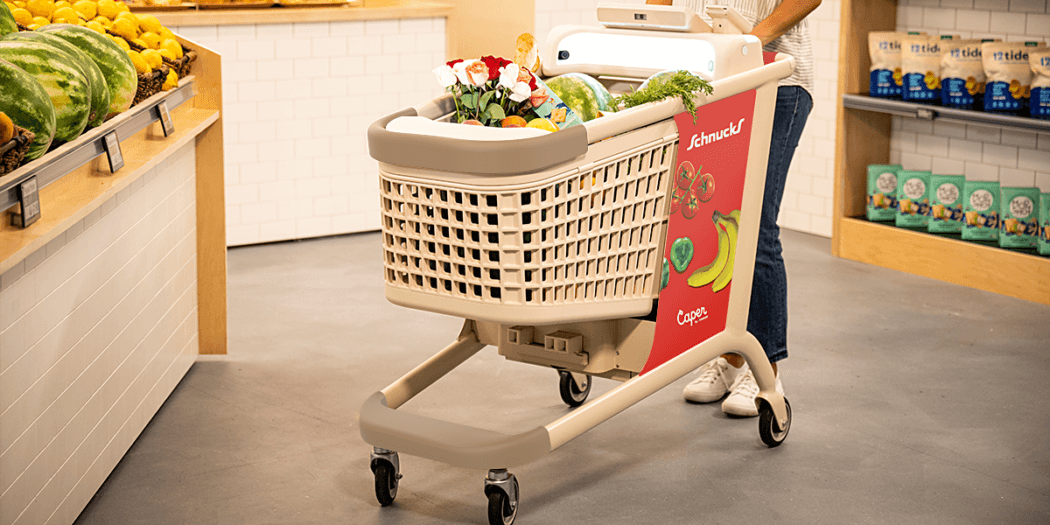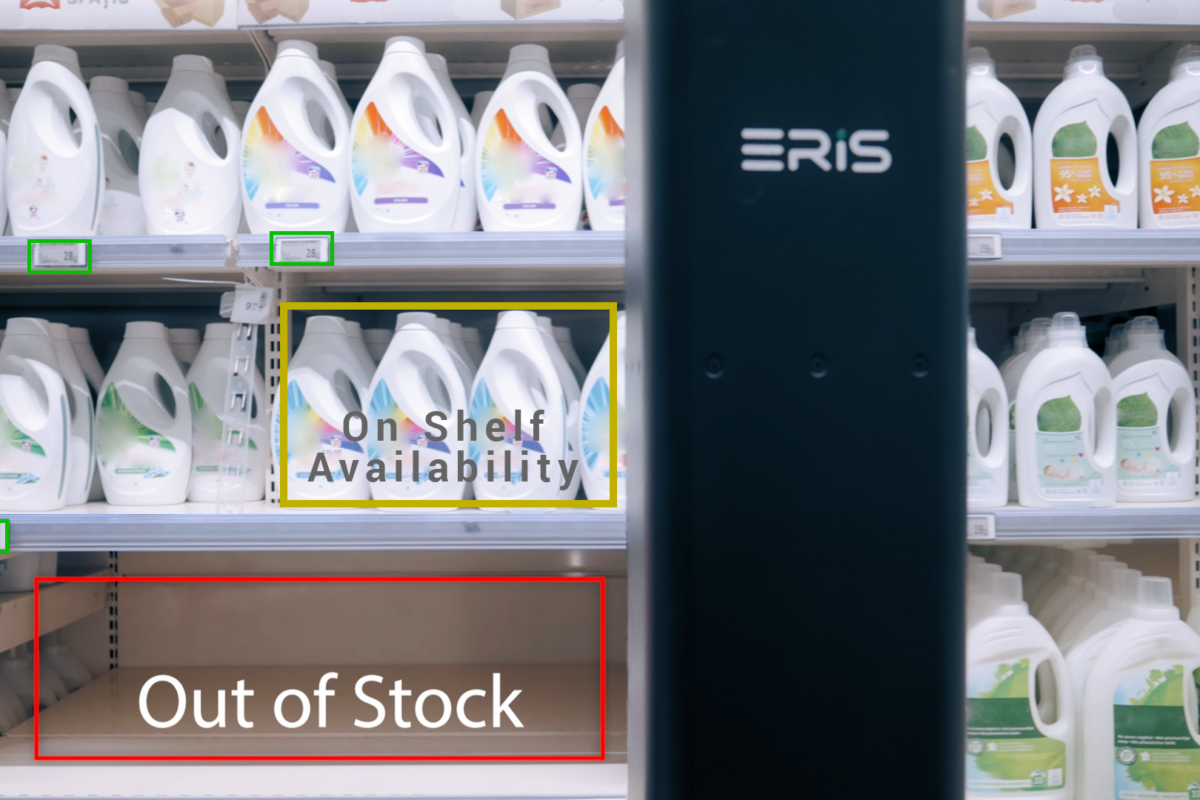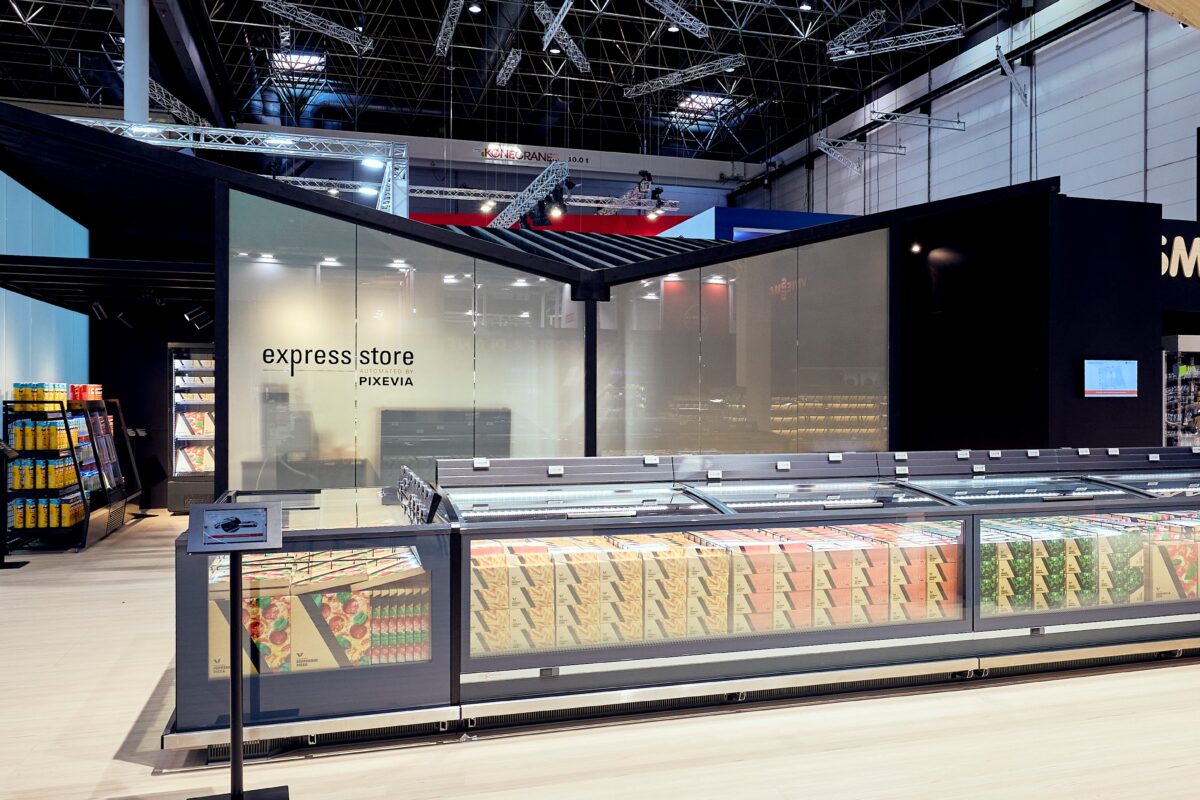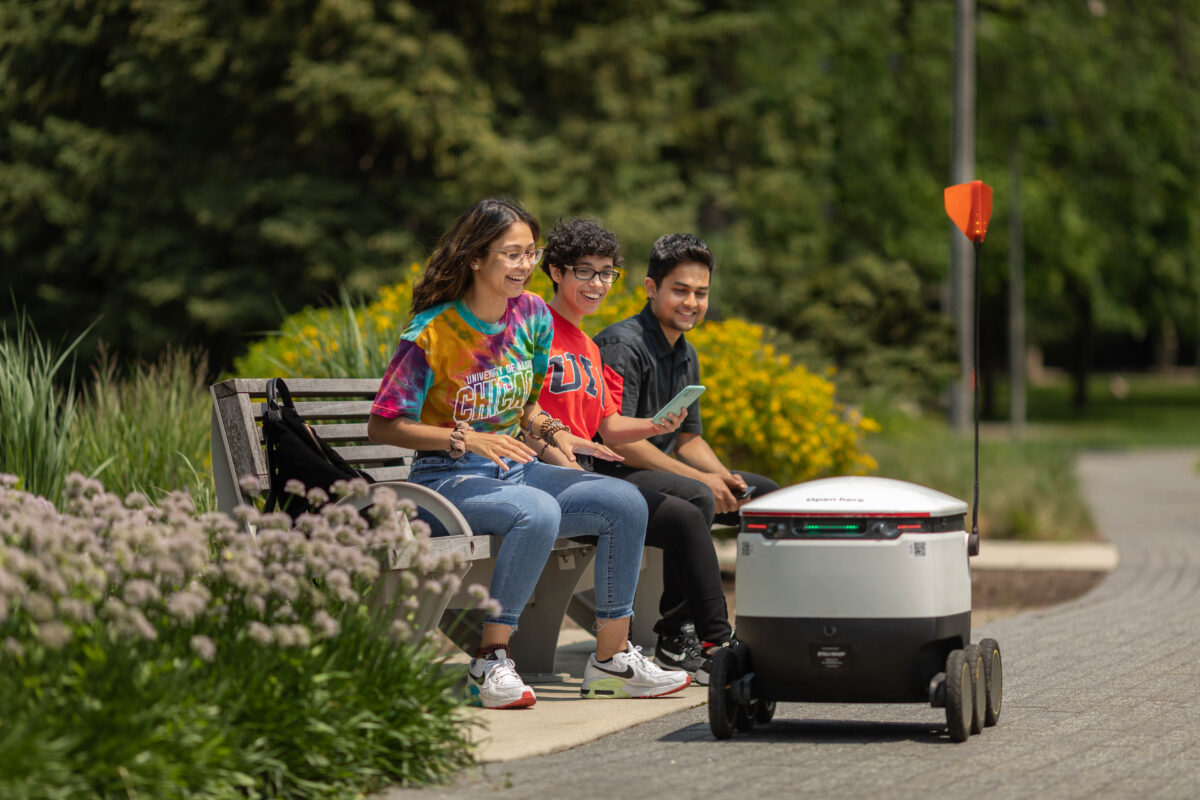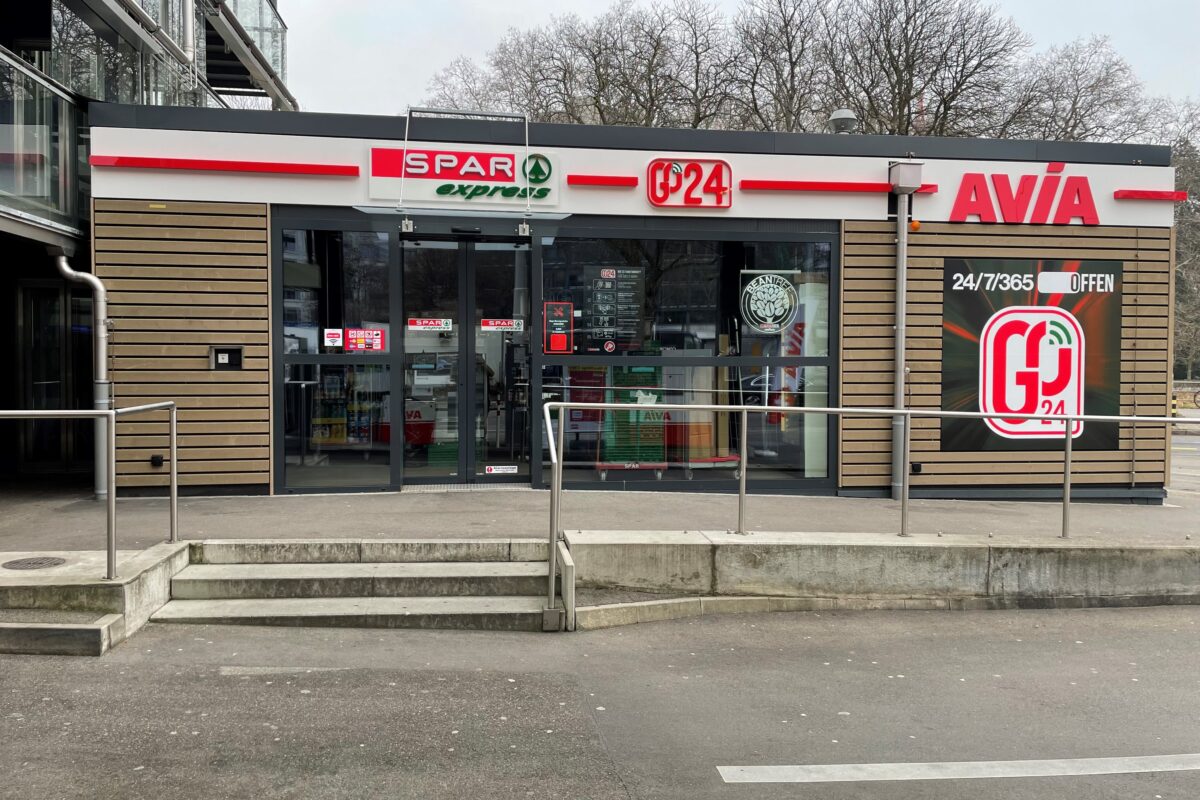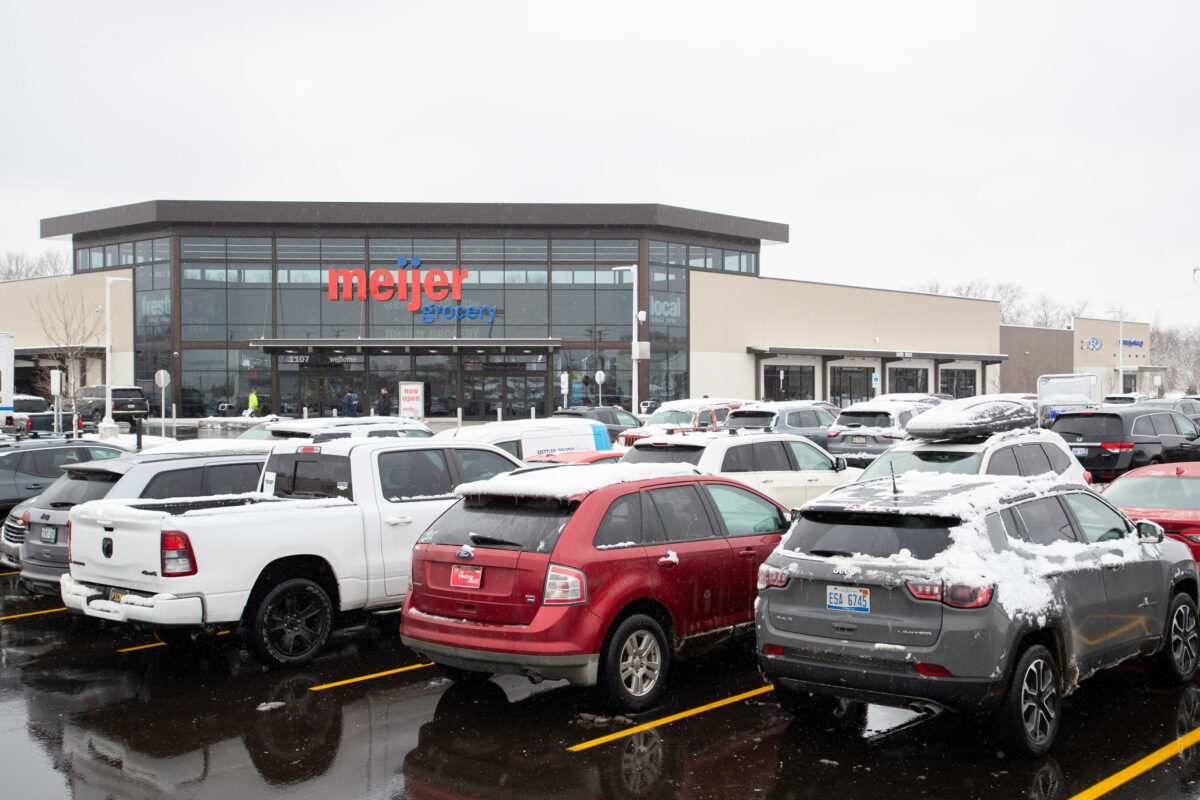Where customers just grab and go!
by Julia Pott (exclusively for EuroShop.mag)
Long gone are the days when the Amazon Go Store in Seattle was the only checkout-free store on the market. The technology is now widely available and different approaches are being tested in America, Asia, and Europe. While self-checkout systems are already fairly commonplace and have paved the way for new payment options, entirely checkout-free or unmanned formats are still the exception, though there are several successful examples. Can they be a legitimate alternative to traditional brick-and-mortar stores with their checkout lines and cashiers?
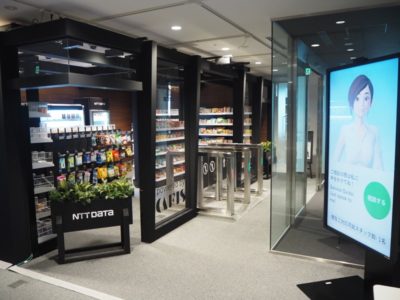
Unmanned store in Tokyo © Cloudpick
The overarching goal of checkout-free stores is to provide consumers with a more convenient shopping experience. Customers visit the store, grab what they need, and leave. Stores use surveillance cameras to track customer activities and purchases. There is no need to wait in line, to grab your wallet or smartphone, and no active payment process is required.
“Just walk in and out”: Using your face to pay
At this point, stores use facial recognition technology to ensure a 100% seamless shopping experience at check-in and check-out – provided the cameras are sophisticated and don’t require shoppers to look directly into the lens. In Asia, checkout-free stores use biometric check-in solutions to make this a reality. Examples include the Chinese online retailer JD.com or the 7-Eleven unmanned X-Store in Taiwan. NTT Data, a Japanese IT service provider has introduced facial authentication in its Catch & Go cashierless stores throughout several countries including Japan, Korea and Singapore. Yet even in Asia, this form of identification is still not widely accepted at this juncture. However, the Alibaba Group features facial recognition payment solutions in some of its stores and food venues.
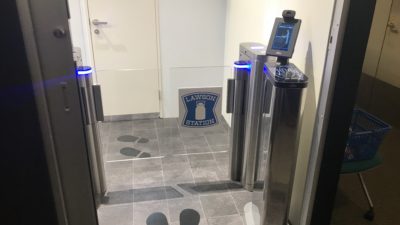
© Zippin
Other biometric payment solutions have been in the works for some time but have not yet fully gone mainstream. A palm-scanning payment method is one option, though it isn’t contactless. According to a recent report, STMicroelectronics and Fingerprint Cards AB have partnered up to develop a Biometric System-on-Card (BSoC) solution to bring a contactless fingerprint payment option to the market: Shoppers use their fingerprint, which is stored on the payment card, for verification and contactless transactions. This type of application could be an attractive solution for unmanned stores to facilitate easy check-in and payment processes.
It’s all about apps
In most unmanned stores, customers provide identification at the entrance. An app generates a barcode on their smartphone, which they have to scan. Customers point the barcode in front of a reader at the entrance for identification and to gain access. This is how consumers check-in at unmanned stores of the Zippin Company in San Francisco. Apart from its concept convenience store in its hometown, Zippin also collaborates with Moscow-based supermarket chain Azbuka Vkusa on a cashierless store-in-store concept and partnered up with Brazilian retail chain Lojas Americanas for its Ame Go stores.
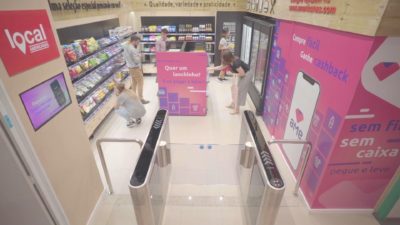
First cashier-free Ame Go store © Zippin
Having said that, shoppers need the Zippin app to shop at the Zippin store. The Moscow store-in-store concept requires its customers to download Sberbank’s Take & Go mobile app and register a credit card. Unfortunately, many great retail payment concepts have failed because customers need to download the respective store app. If multiple retail chains were to offer checkout-free stores down the road, customers would have to download separate apps for the different grocery stores, drugstores, and convenience stores they frequent. Empirically, that’s an obstacle most consumers cannot overcome.
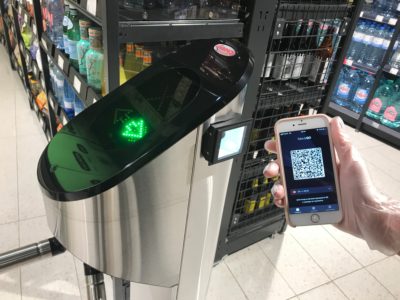
© Zippin
One solution to this obstacle is check-in and payment integration in the most popular and widely used apps. Many Asian providers of unmanned stores use the Chinese WeChat messaging application by Tencent. It now combines multiple functions, including payment options via WeChat Pay. BingoBox, a Chinese retailer operates several hundred unmanned convenience stores using this feature. Before entering the store, customers open a so-called mini-program in the WeChat app, and scan a barcode at the entrance to enter the store. Once inside, customers scan the product barcodes via the program which generates a checkout barcode at the end. The exit door opens after successful payment, allowing customers to leave the store.
European users tend to be more reluctant to pay using their mobile devices or to link shopping functions with social media platforms. This is where store concepts that use payment cards for check-in purposes could be more successful in the beginning. California-based AiFi offers so-called NanoStores. Customers swipe their credit card or debit card through a reader to access the store. Checkout is contactless via the card. The company also collaborates with retailers like Ahold Delhaize (Albert Heijn) in the Netherlands.
Virtual shopping cart: I spy, with my little eye, something you don’t buy
Here is the big question: How do stores know what products customers buy? Technology companies are not exactly forthcoming in letting outsiders access the depths of their systems. But we do know the central components are computer vision (PC-based vision systems) and artificial intelligence. Thanks to machine learning, computer programs have learned to accurately recognize (video) images and interpret and differentiate activities. They are able to determine whether a person takes a bottle from the shelf, opens it, drinks from it and puts it back on the shelf again, or whether he or she tucks it under the arm or sticks it into a bag.
Camera surveillance in checkout-free stores detect in real-time whether customers take products, put them back on the shelf or pass them to another person. This requires comprehensive camera coverage. BC Card, a payment processing company from South Korea, operates a 20 square meter store in its headquarters in Seoul. The space uses 33 video cameras with three different functions (monitoring, motion analysis, camera control), which facilitate the accurate monitoring of a maximum of 10 customers.
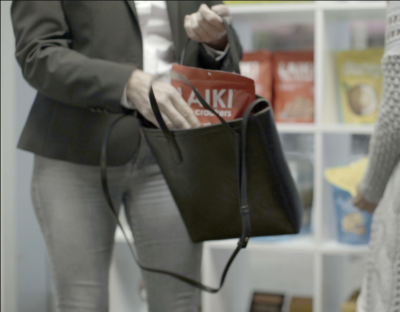
© Zippin
Computer vision analysis is complemented by sensing technology in most cases. Stores use embedded weight sensors on the shelves to precisely track which items are being removed and put back. Up to now, these formats are mostly used in small stores with a limited number of customers and products. This already works quite well in convenience stores with about 500 packaged items.
Other retail formats prove more difficult. Computer vision reaches its limits when customers shop for clothing items and take multiple white, short sleeve shirts with no sign or fixed shape into the dressing room, or if a shopper places several loose carrots into her shopping bag. Having said that, Amazon has – once again – shown how this might work with Amazon Go Grocery, its first grocery store, which debuted in San Francisco in February 2020. With 5,000 items including fresh produce and baked goods for sale across the large premises, shoppers can check-in at the entrance via a barcode, pick the items they want, place them in their bags and simply walk out the door thanks to camera surveillance and shelf sensors.
Self-scanning or RFID technology
Retail stores without sophisticated computer vision technology have two other methods at their disposal to facilitate a cashierless checkout.
Self-scanning has seen an upsurge in unmanned stores such as Würth24 in multiple German cities, SunnyBee Market in Chennai (India), and April Gourmet in Beijing. Shoppers use an app on their phones to enter the store, and scan barcodes on each product. They also use the app to pay, all with no staff involvement.
Sainsbury’s abandoned its cash and card-free store pilot in London after three months, citing that not all shoppers were ready to fully embrace the checkout-free concept. Too many consumers requested additional payment options. The chain responded and now features a number of manned checkouts and self-checkout counters. Zippin also offers the Zippin Cube, a modular, pre-fabricated cashierless store-in-a-box as a standalone space or addition to normal store operations.
Another method that’s also not quite as sophisticated is to equip goods with RFID tags for tracking. Some JD X shops in China, Octobox, OMO Store, Pick & Go in Singapore, Panasonic, and Trial Company, Inc. in Japan have used this method.
A seamless shopping environment is all well and good. But what about the shopping experience?
Many checkout-free stores were pilot projects or experiments by large and valuable tech companies, designed to test and improve their products. These technologies also offer promising long-term prospects for retailers as it relates to the optimization of in-store analytics, inventory management and personalization strategies.
Unmanned stores can be just the right solution for certain shopping scenarios such as convenience stores and kiosks in train stations and airports. They feature a small footprint and limited product assortment, and are a great alternative when people are in a hurry.
However, there are also good reasons why China’s unmanned stores didn’t quite take off as expected in recent years. According to Inside Retail Asia, many stores have closed again or filed for bankruptcy. The limited number of shoppers and countless technical gaffes are some reasons. Convenience alone doesn’t make for a memorable shopping experience. Sure, at first it’s exciting to simply walk out of the store with your shopping bag. Yet once customers understand the concept, they still seem to long for more variety and pleasure.






